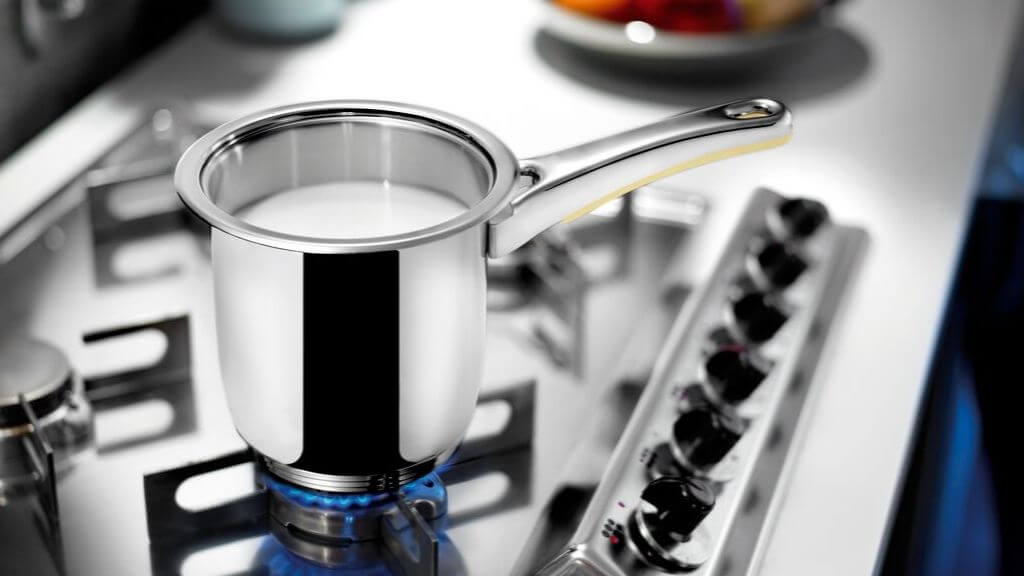Most people are aware of the health benefits of yogurt; providing probiotics and beneficial digestive enzymes to give our immune systems a little extra help. Adding to the levels of natural bacteria we have in our bodies, specifically in our digestive system, aids in digestive processes.
Yogurt is also a great source of calcium and vitamin D to keep bones healthy and ward of osteoporosis. Studies have also shown that low-fat yogurts can help reduce the risk of high blood pressure.
Unfortunately, what most people do not know is that the yogurt available in stores loses much of its health benefits during the production process. Most brands of yogurt in the U.S are pasteurized after the fermentation process, which essentially kills all the beneficial probiotics. They are usually added back in, but they are not as effective as the natural ones.
Additionally, most yogurts have sugar or syrup added. The use of artificial sweeteners (sucralose) greatly reduces probiotic content because this ingredient kills them off.
What's the Best Yogurt? The DIY Kind
So how do we get the benefits of yogurt without endlessly searching through the stores for the organic and unpasteurized versions? The simple solution—make your own. Homemade yogurt with raw milk provides all the natural benefits and is easy and simple to make.
Raw milk is preferred over pasteurized milk for several nutritional, ethical, and environmental reasons. Raw milk is thought to have nutritional content because the cows are fed on grass, meaning they will have more fat-soluble vitamins and nutrients. In fact, some cutting-edge probiotic and prebiotics use a dairy ingredient. Pasteurization removes magnesium, copper, and iron as well as decreases calcium levels. Raw milk keeps these vital minerals for us to benefit from.

Environmentally speaking, conventional dairies are highly destructive to the environment, with air and water pollution as well as gain exposure to pesticides. Smaller raw milk dairy operations allow cows to graze on pastures thus reducing soil erosion and pollution content. There is also less fuel consumption as the cows graze the fields, removing the need for baling or mowing equipment.
Ethically speaking, the cows on larger operations are overcrowded and their treatment is not always humane. They are more prone to morbidity and disease compared to the free-ranging cows grazing on smaller raw milk facilities.
Support for using raw milk has grown substantially over the last decade. Not just for ethical and environmental reasons, but because of the increased health benefits that this more natural form provides. Combining the fresh milk nutrients and enzymatic and probiotic powers of fermentation make homemade raw milk yogurt the next best thing in healthy eating.
Making Your Own Yogurt
Raw milk is satisfying and nutritious. When combined with friendly bacteria and food enzymes, it is a powerful health food.
Making your own is actually easier than most people expect. Because raw milk yogurt has more enzymes, it tends to be runnier than what you find in the stores. The best way to make it is with a combination of raw milk and fresh cream. Jump on board the health train, by following the instructions provided to help you create your own raw milk yogurt. Even though the store versions offer convenience, there is no better quality than homemade. Your body will thank you.
Good-For-Your-Gut Homemade Yogurt
Difficulty: Easy
Time: 10 - 14 hours
Serves: 8
Ingredients:
1 quart of fresh Raw Milk
2 tablespoons Greek or Bulgarian starter cultures (found in most health food stores) OR or two tablespoons unsweetened, additive-free yogurt with live cultures (found in most grocery stores)

Instructions:
1. Heat the raw milk over a medium flame until it reaches a temperature of 43 degrees Celsius (the temperature is very important because you do not want to kill off any valuable nutrients).
2. Remove from the heat and mix in the culture starter.
3. If you have a yogurt maker, pour this mixture into the maker and culture it according to the instructions (usually about eight to twelve hours).
4. If you have a food dehydrator, first pour the milk and culture mixture into a mason jar and cover. Place the jar into the food dehydrator and set the temperature to 43 degrees Celsius, leaving it to culture for eight to twelve hours.
5. If you have a slow cooker, the mixture again needs to be poured into a mason jar first. Place this in the center of the slow cooker and pour warm water (approx 43 degrees Celsius) into the ceramic insert. For additional insulation, cover with a warm towel and place in a warm area of the kitchen. Culture time again will be between eight and twelve hours.
6. After the culturing period is complete, remove the mixture from whichever device you used. Note that the milk mixture will still be warm. Place directly into the refrigerator to let chill for an hour or two.
7. After two hours, your homemade raw milk yogurt is ready to serve. Sweeten with some honey or syrup or add your favorite nuts, fruit or even granola.
The Bottom Line
To enjoy the true benefits of yogurt, try making your own rather than buying some from the store. What you lose in convenience you gain in health benefits and longevity. The benefits of raw milk are undeniably worth some home culturing time. You will reduce allergies, improve skin conditions and prevent nutrient deficiencies.






